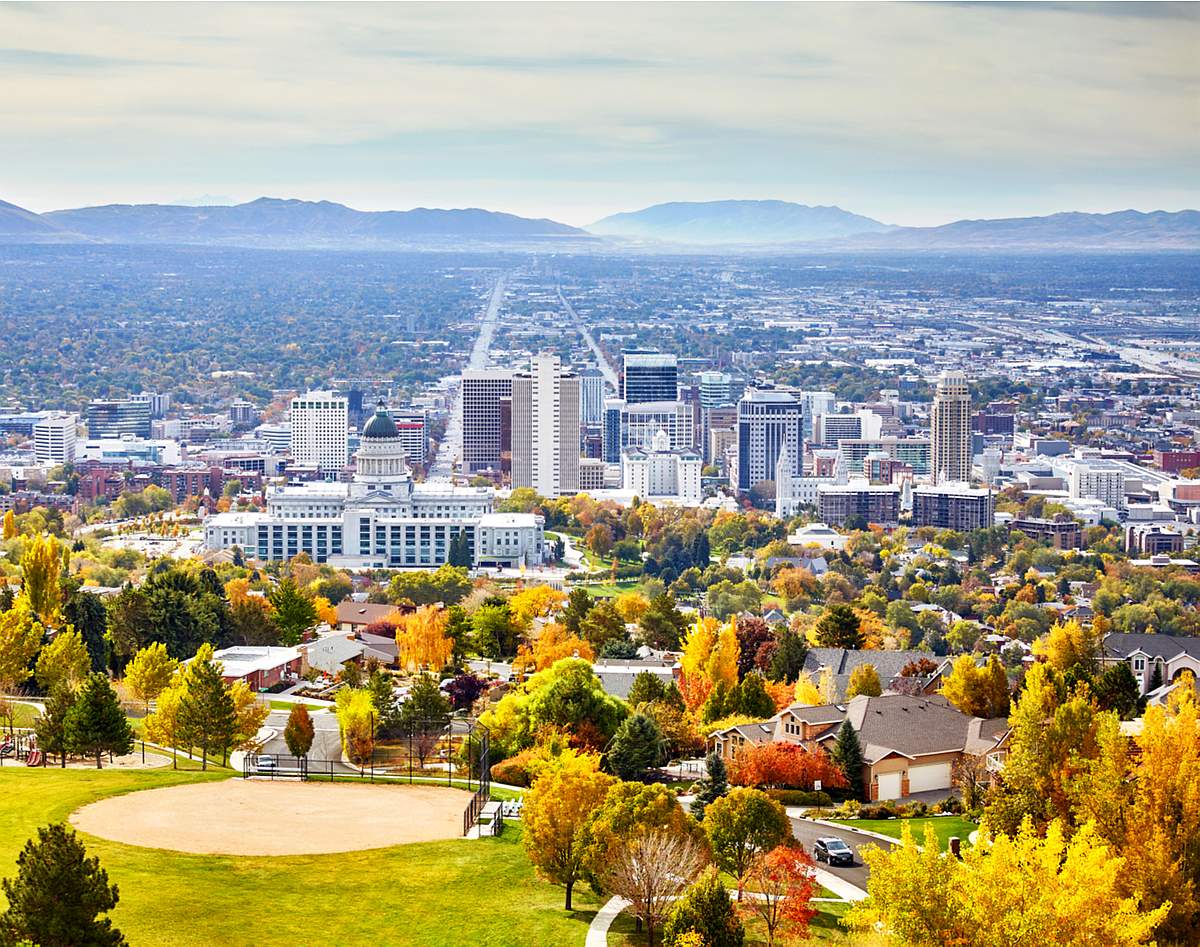

“Times like these bring out the best in people. This is a time for Utah to shine.”
— Gov. Gary Herbert, The Utah Leads Together Plan.
It’s been a year since the start of the COVID-19 pandemic, and Utah’s economy has shined. In the most recent Milken Institute report of the best performing cities, three Utah cities, Provo/Orem, Salt Lake, and Ogden/Clearfield scored in the top ten despite the challenges of the last year. In the same February report, Logan and St. George also made the top ten list for smaller cities. Then just last month, US News and World Report ranked Utah’s Economy #1 in the nation.
TechBuzz News previously shared some of the ongoing reasons for Utah’s economic resilience. Another reason cited for the cities’ overall success was their responses to the pandemic. Multiple Development Directors within the state explained the impact the COVID-19 pandemic had on Utah, though it might not be what you expect.
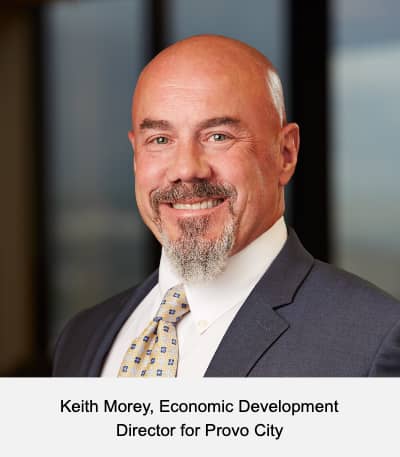 “Overall, we’re just excited about the national recognition. We think it is a tribute to something that Utah residents have known all along, and it’s nice to have other people outside see that as well,” said Keith Morey, the Development Director for Provo City. “It presents an incredible opportunity for us. We managed the pandemic very well as a state. Although we had some hardships, businesses were able to continue to operate for the most part, and we rebounded fairly quickly.”
“Overall, we’re just excited about the national recognition. We think it is a tribute to something that Utah residents have known all along, and it’s nice to have other people outside see that as well,” said Keith Morey, the Development Director for Provo City. “It presents an incredible opportunity for us. We managed the pandemic very well as a state. Although we had some hardships, businesses were able to continue to operate for the most part, and we rebounded fairly quickly.”
When the pandemic hit, Utah was the first state to release a comprehensive economic plan to assist in an economic recovery.
“The Utah Leads Together plan, published on March 24, 2020, has now been followed by four additional volumes that guide Utah’s Covid-19 economic response,” said Natalie Gochnour, Director at the Kem C. Gardner Policy Institute. In American Affairs Journal, a national public policy publication, Gochnour continued, “While the response has not been without its problems, the Utah economy continues to outperform other states.”
Gochnour published research in April of 2020 showing that Utah has the most diverse economy in the nation, with strong economic activity across multiple sectors. That diversity is responsible for much of the state's resilience over the last year. “We went in stronger in a balanced economy, and it's worth developing that just a little bit more,” Gochnour said. “A balanced economy means that the industries that were really hard hit — leisure, hospitality, oil, and gas — we have those in our state, and it’s been tremendously difficult for them. But other sectors — our construction sector is doing extremely well, our tech sector is doing well. So on balance we've been able to work through this relatively better than other states.”
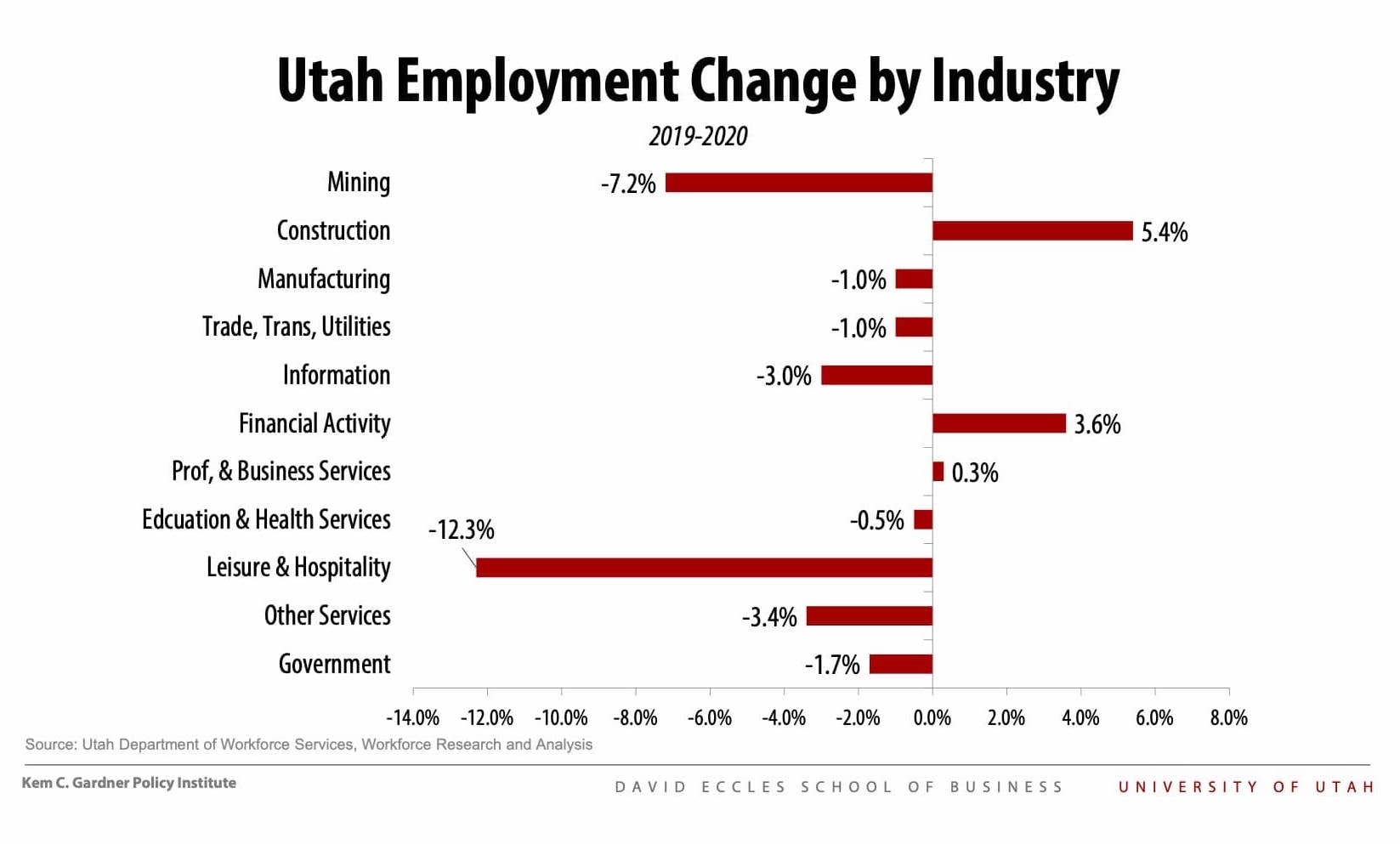
The pandemic was especially challenging for small local businesses. Slogans like “keep the cheer here,” and “shop small, shop local” were popularized to help. Local businesses have certainly had their struggles, but when looking at the overall economy, there doesn’t seem to be lasting damage. When asked about how Covid-19 affected their cities, both Ogden and Provo’s Economic Development Directors expressed their astonishment at their city’s overall economy. Did they see any lasting damage from the pandemic?
 “Not at all. And I don't want that to be insensitive, because there is that segment of the self employed that have been hugely impacted. A lot of businesses, like the mom and pop shop, or the single owner business, has just really been hurt,” said Tom Christopulos, Development Director for Ogden. “But when you look at the cumulative effect, what you'd expect to see is retrenchment in GDP, and more unemployment. We're at 4.5 -4.6% unemployment, something along those lines. When I was going to school many moons ago, 4% was considered full employment.”
“Not at all. And I don't want that to be insensitive, because there is that segment of the self employed that have been hugely impacted. A lot of businesses, like the mom and pop shop, or the single owner business, has just really been hurt,” said Tom Christopulos, Development Director for Ogden. “But when you look at the cumulative effect, what you'd expect to see is retrenchment in GDP, and more unemployment. We're at 4.5 -4.6% unemployment, something along those lines. When I was going to school many moons ago, 4% was considered full employment.”
Like others, Christopulos seemed surprised by the positive numbers. After preparing for the worst, he saw all expectations pleasantly fall short.
“Our unemployment levels, considering the economic circumstances, they’re odd. They’re just not sequencing the way you think would happen. Our sales taxes are up instead of down. Last year we didn't think we'd have any ability to give people raises or anything else, with the deep freeze, and as far as expenditure output was concerned. None of that came to fruition... It's really been weird. When you aggregate the numbers things are actually better, which is really strange.”
Gochnour also mentioned the strength of Utah’s employment.
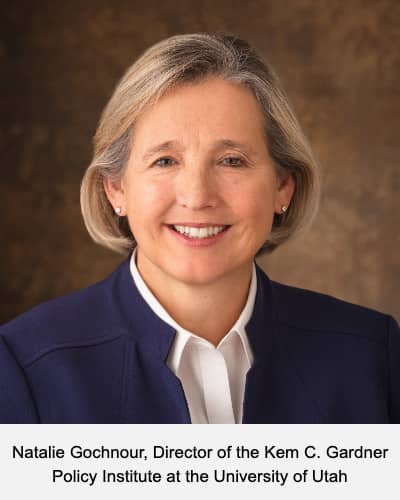 “When COVID hit us, it was very challenging for the Utah economy. But at our very worst, we were about where the nation is today,” Gochnour said. “That's really surprising to a lot of people. But the nation is still [economically] contracting and just referring jobs at about 6%. From December of 2019 to December of 2020, the nation contracted by 6%. Utah has now expanded by .6% over the same timeframe; very small, but we're one of only two states that's expanding. If you look at the bottom of our drop, it was a little bit higher than 6%, but not much different from where the US is today.”
“When COVID hit us, it was very challenging for the Utah economy. But at our very worst, we were about where the nation is today,” Gochnour said. “That's really surprising to a lot of people. But the nation is still [economically] contracting and just referring jobs at about 6%. From December of 2019 to December of 2020, the nation contracted by 6%. Utah has now expanded by .6% over the same timeframe; very small, but we're one of only two states that's expanding. If you look at the bottom of our drop, it was a little bit higher than 6%, but not much different from where the US is today.”
While most states have reported a major drop in employment, Utah and Idaho stand as outliers as the only states with increases in employment during this time.
Ben Hart, the deputy director of economic development for the State of Utah, still isn’t pleased with the employment numbers. While the growth looks good on a scale, there are still those who have lost employment over the last year.
“Some of the biggest impacts are the number of people that are unemployed,” Hart said. “It's about 20,000 people higher than it should be. And the number of people that have dropped out of the labor force participation rate, about another 30,000 people. So there's a lot of people on the sidelines.”
While Utah has come out strong from the global pandemic, it didn't come out unchanged. Hart spoke to some of those lasting effects.
 “I think this has been a more targeted recession, or more targeted pandemic or economic event than anything we've ever seen,” Hart said. “The other thing I would say is, there's a lot of money on the sidelines just waiting... People want to travel, people want to get back out.” Hart also mentioned the changes to commuter patterns, with more employees than ever working from home. “I think that's the thing that will really, really have a longer lasting effect. I don't think we want to say negative or positive — the reality is there could be a lot of positives.”
“I think this has been a more targeted recession, or more targeted pandemic or economic event than anything we've ever seen,” Hart said. “The other thing I would say is, there's a lot of money on the sidelines just waiting... People want to travel, people want to get back out.” Hart also mentioned the changes to commuter patterns, with more employees than ever working from home. “I think that's the thing that will really, really have a longer lasting effect. I don't think we want to say negative or positive — the reality is there could be a lot of positives.”
General statistics show there have been many positive developments through the last year, at least from an economic standpoint. Each city has its strengths. While Provo/Orem and Salt Lake focus on tech, Ogden is seeing growth in construction and manufacturing. Utah continues to thrive despite uncertain global conditions.
“It is amazing. Every time I say that, I knock on my desk, because it's like, ‘What's going to happen that will actually start reflecting what's really going on?’” Christopulos said. “Construction is way up. It's carrying the day. In Ogden and Weber county in general, there are a lot of apartment buildings going up, a lot of commercial construction, a lot going out of BDO [Business Depot Ogden]. So, a lot of those things continue on.”
Morey noted that the response to the pandemic in Provo, and Utah as a whole, caught attention from the rest of the country.
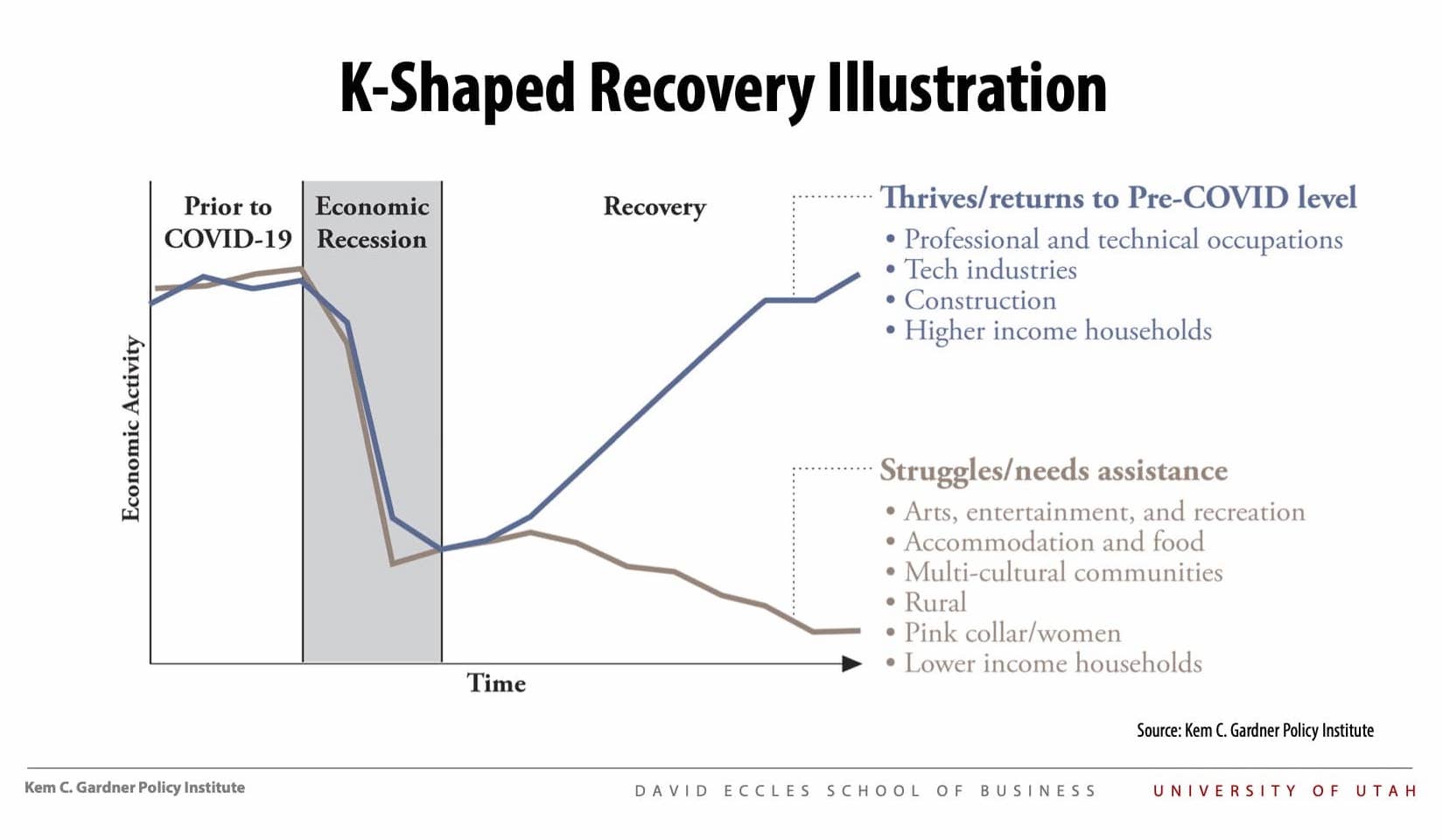 “I think this presents a great opportunity for the future, because now as other companies look for places they can expand to or move to where they have a better future, they look at us,” said Morey. “We can find homes for them and employees, and places for young children, and they grow up to be employed here, and I think that's just good for all of us.”
“I think this presents a great opportunity for the future, because now as other companies look for places they can expand to or move to where they have a better future, they look at us,” said Morey. “We can find homes for them and employees, and places for young children, and they grow up to be employed here, and I think that's just good for all of us.”
Hart, too, mentioned the increase of employers, businesses, and companies coming to Utah as the economy flourishes. Both Morey and Hart view this surge of migration from other states as a positive.
“Anecdotally, we've talked with some of our top companies in the state, some of our really great employers. They say it has been easier over the last 12 months to recruit new talent to the state of Utah than ever before,” Hart said. “I think that's a reality, and I think we are seeing a lot of people move to the state. We see that reflected in housing again. We're recruiting a lot of people that want a better quality of life.”
While most economic indicators bode well for future, there are some who still worry about the lasting negative effects of a pandemic.
“To me, the biggest impact of COVID is that it threw a huge wrench into consumer confidence,” Gochnour said. “That's not a very artful way of saying it, but it was like a punch in the gut to consumer confidence... It made it harder to go engage in the marketplace because of fear of contracting the disease, or hurting people that we love. So the most serious economic impact is really what it did to consumer confidence.”
Hart’s advice on encouraging growth is to embrace the new normal and lifestyle that comes with that.
“A lot of our lives have become virtual, and so that I think that's something Utah has to embrace and not shy away from,” Hart said. “We've got to understand the long term realities, and get through the short term casualties, and make sure we're on the right path for strong growth coming out of this.”
“It's easy for people to think that this growth is something new, that we haven't had it before, but we've had it for a long time,” Gochnour said. “What's different is how broad based it is. Broad based by geography, broad based by industry, and I think what also is different is that others have struggled. By the vast majority of measures, Utah will come out of the pandemic as the best performing economy in the nation."
Correction: We added Orem in the sentence about the Milken Institute Report's reference to Provo/Orem as the top performing city in their latest report; Orem shares data with Provo to make up the combined Provo/Orem metropolitan area. It should be and is now included in this reference.

